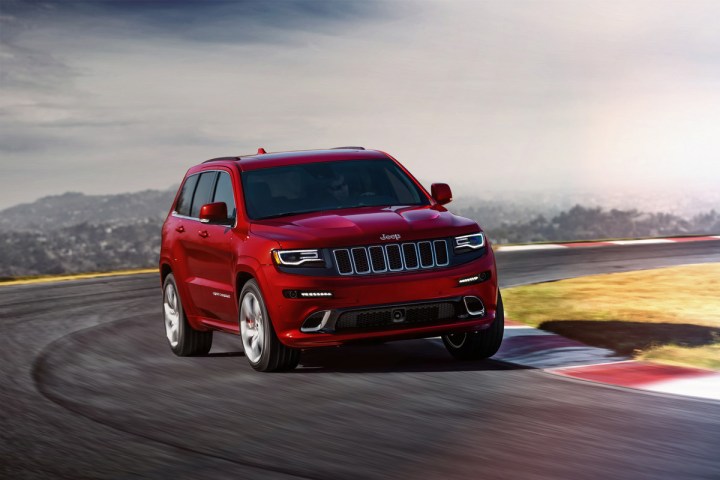
The hot-rodded SUV will arrive before the end of 2017, Manley affirmed on the sidelines of the Detroit Auto Show in an interview with YouTube user Brian Makse. He stopped short of providing technical details, but industry rumors claim the Trackhawk will use a Jeep-specific version of the supercharged 6.2-liter V8 engine that powers Dodge’s vaunted Challenger and Charger Hellcat models.
An eight-speed automatic transmission developed by ZF will be the only unit offered. While Dodge’s Hellcats are rear-wheel drive, the Trackhawk will ship with all-wheel drive, and that’s where the situation begins to get tricky. Car & Driver previously reported the Grand Cherokee’s all-wheel drive system can’t handle the Hellcat’s massive 707-horsepower and 650-lb-ft. output. Developing a new all-wheel drive system for a low-volume model has been ruled out for obvious cost reasons, so the eight-cylinder might have to be electronically detuned before it can be dropped in the Grand Cherokee’s engine bay.
In a separate interview, Manley revealed the on-again, off-again Wrangler-based pickup truck has finally been given the green light for production. The truck will be based on the next-generation Wrangler that’s expected to arrive in late 2017, and the two models will be assembled side by side in Toledo, Ohio. Further details will be announced later this month when Fiat-Chrysler publishes an updated five-year plan for all of its brands.
Finally, Manley announced Jeep will launch a compact SUV at the New York Auto Show that will open its doors in April. Designed as a global model, the SUV will replace both the Patriot and the Compass, and it will carry forward one of the two nameplates. It’s scheduled to go on sale before the end of this year as a 2017 model.
Editors' Recommendations
- Jeep Grand Cherokee 4xe first drive review: Do-it-all plug-in
- McIntosh brings huge, 24-channel sound to 2022 Jeep Grand Wagoneer
- Next Mercedes-AMG C63 could ditch the V8 for four-cylinder hybrid power
- Mercedes-Benz GLE SUV tries to balance power and efficiency with mild-hybrid V8
- Walmart takes big price cuts to Dyson V8 and V10 cordless stick vacuums



